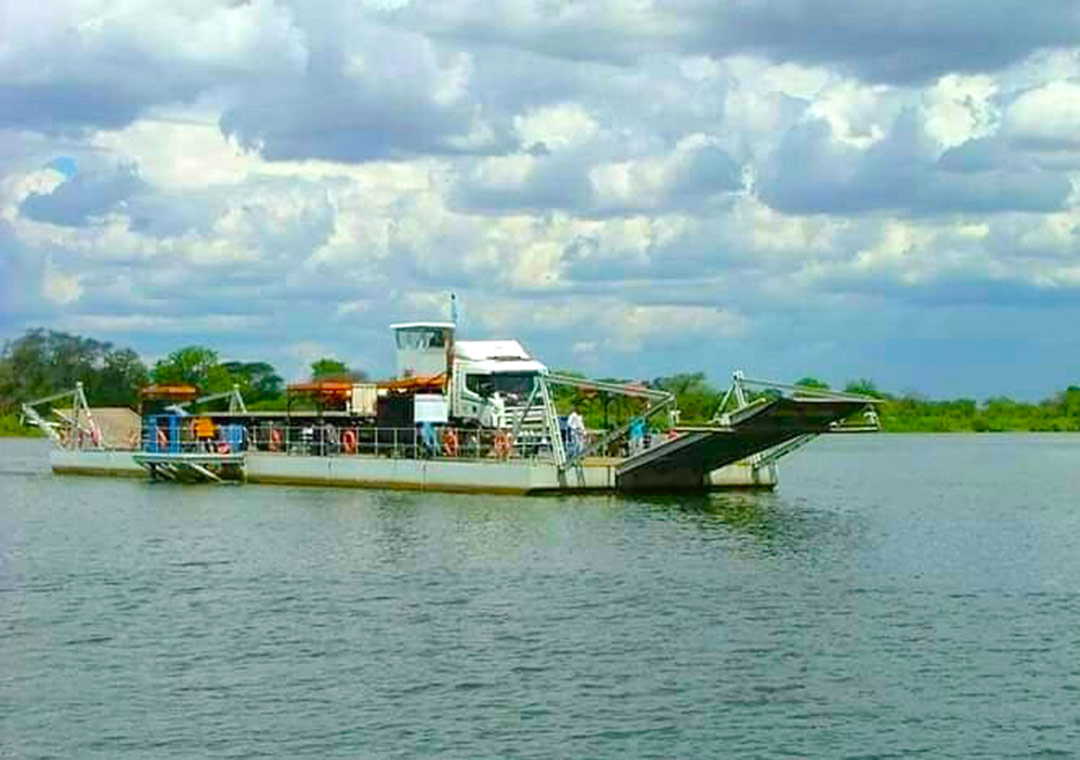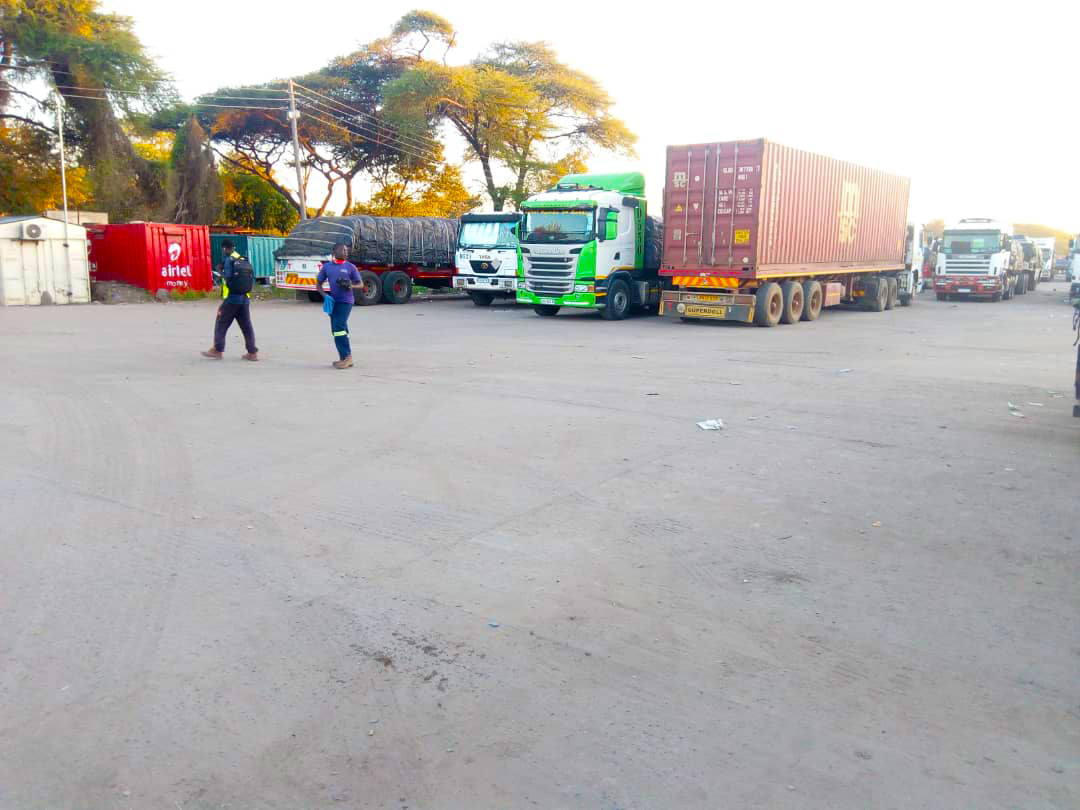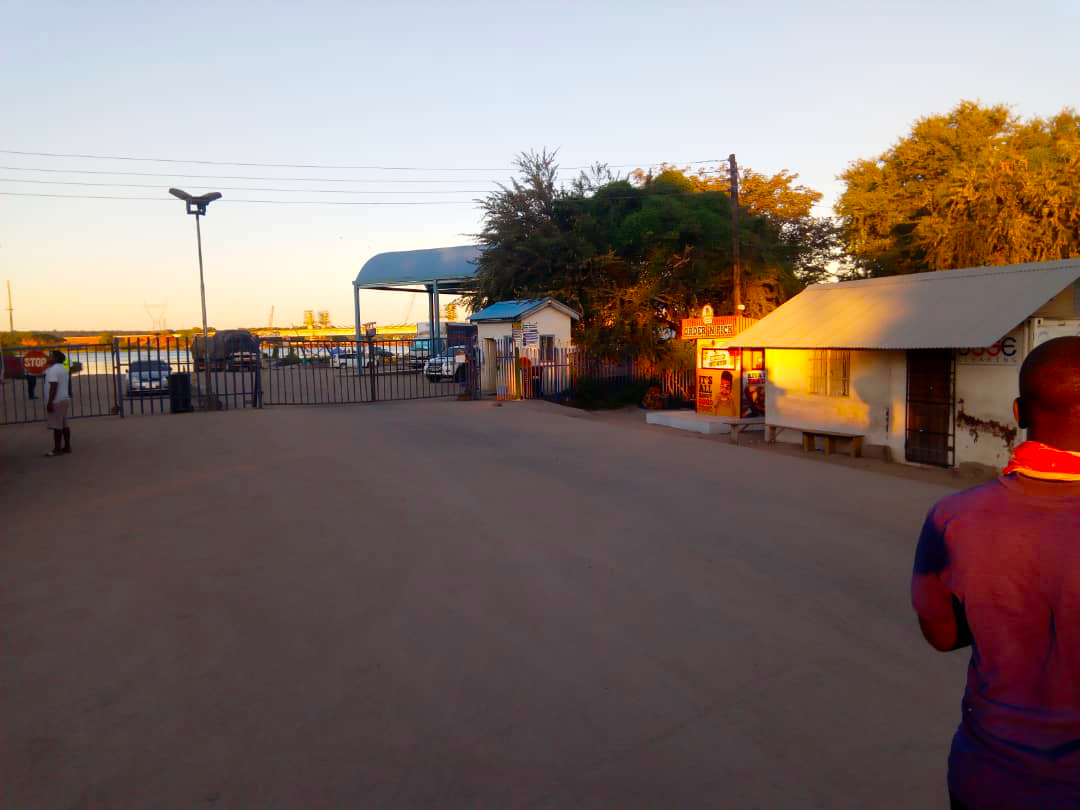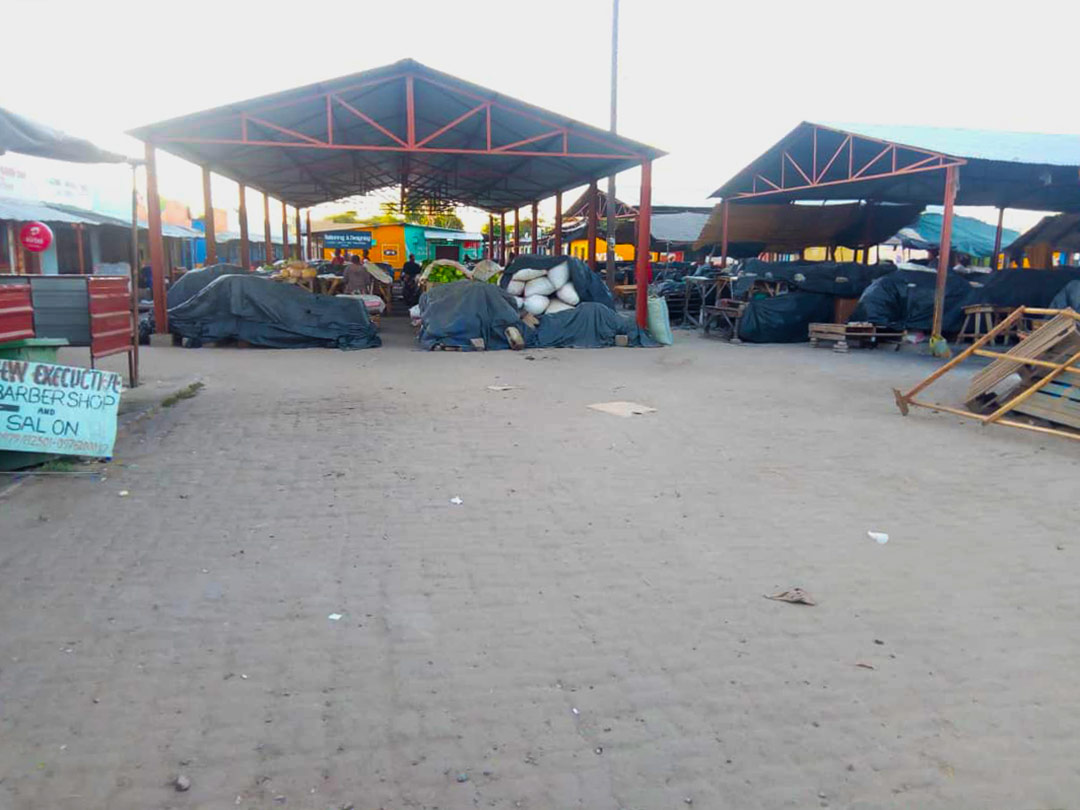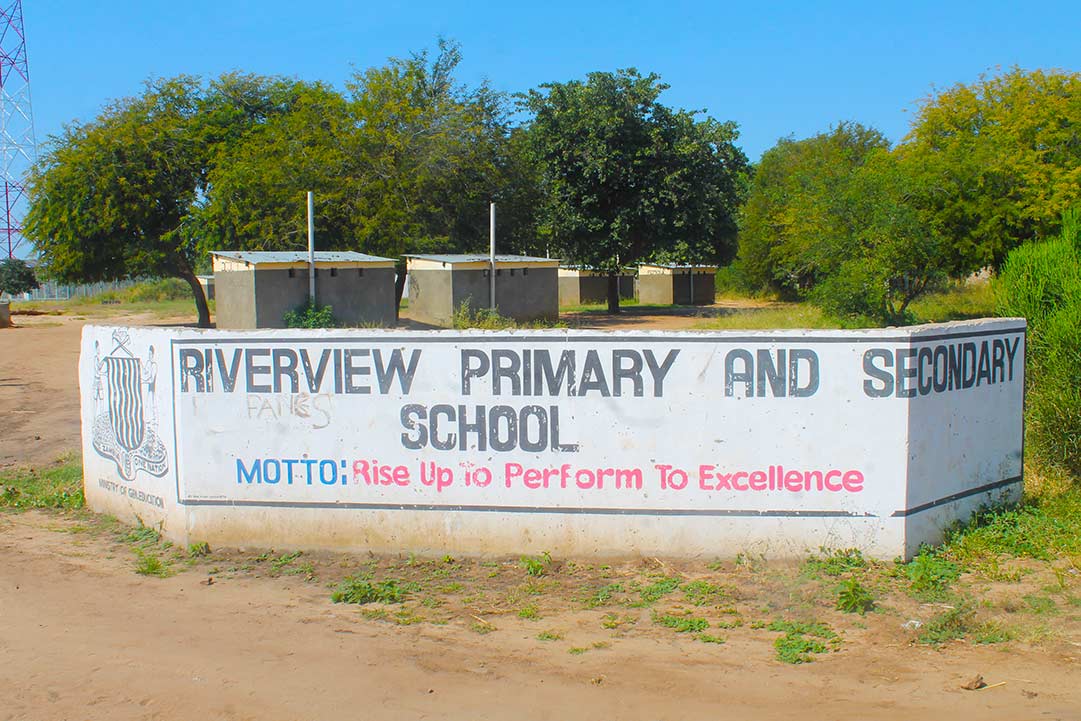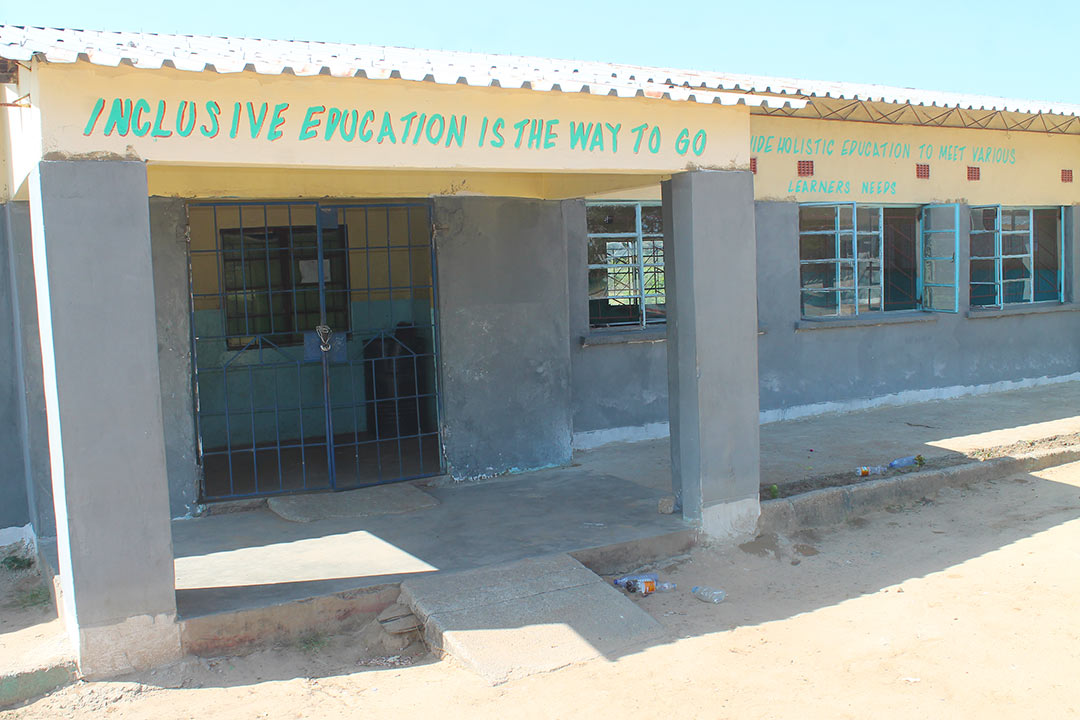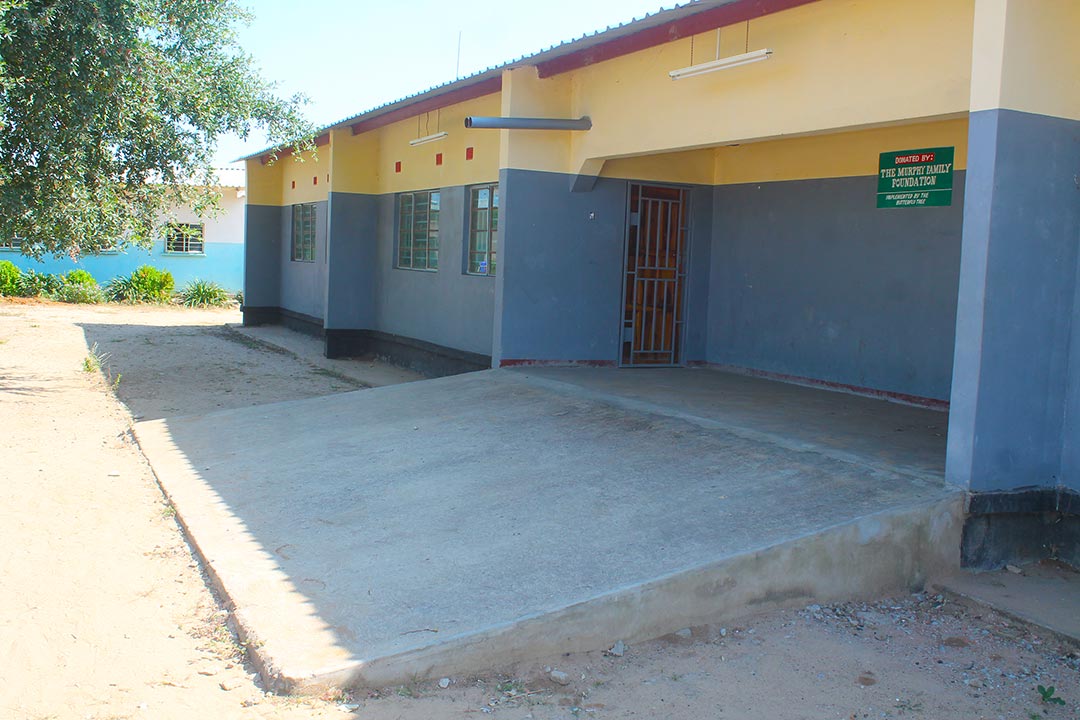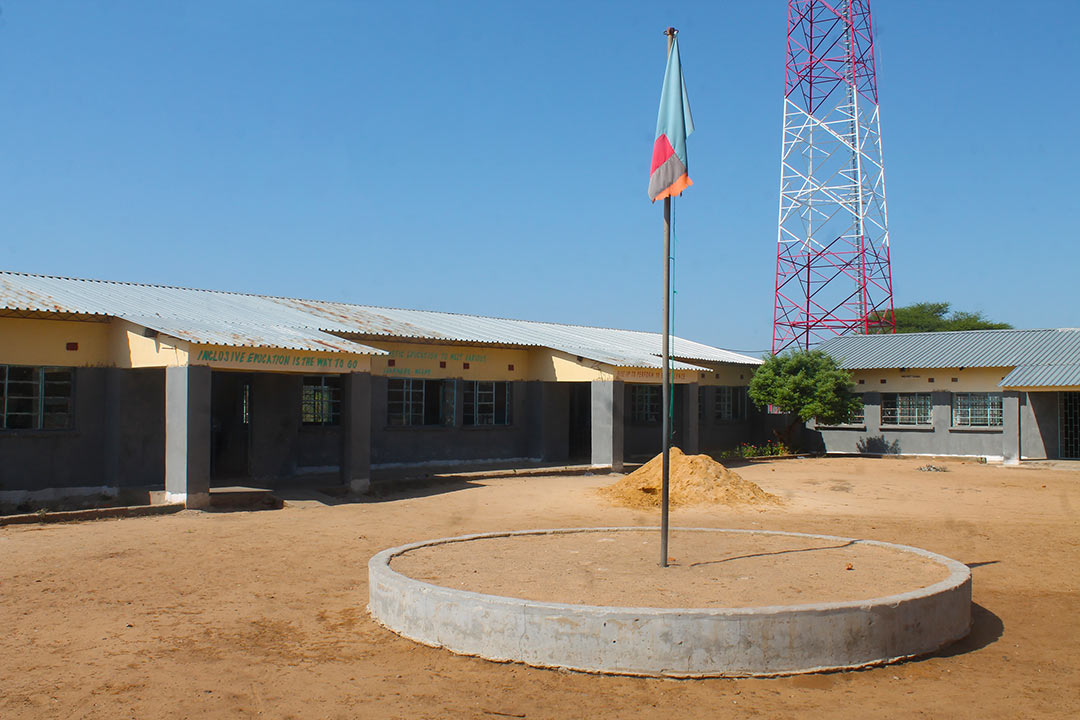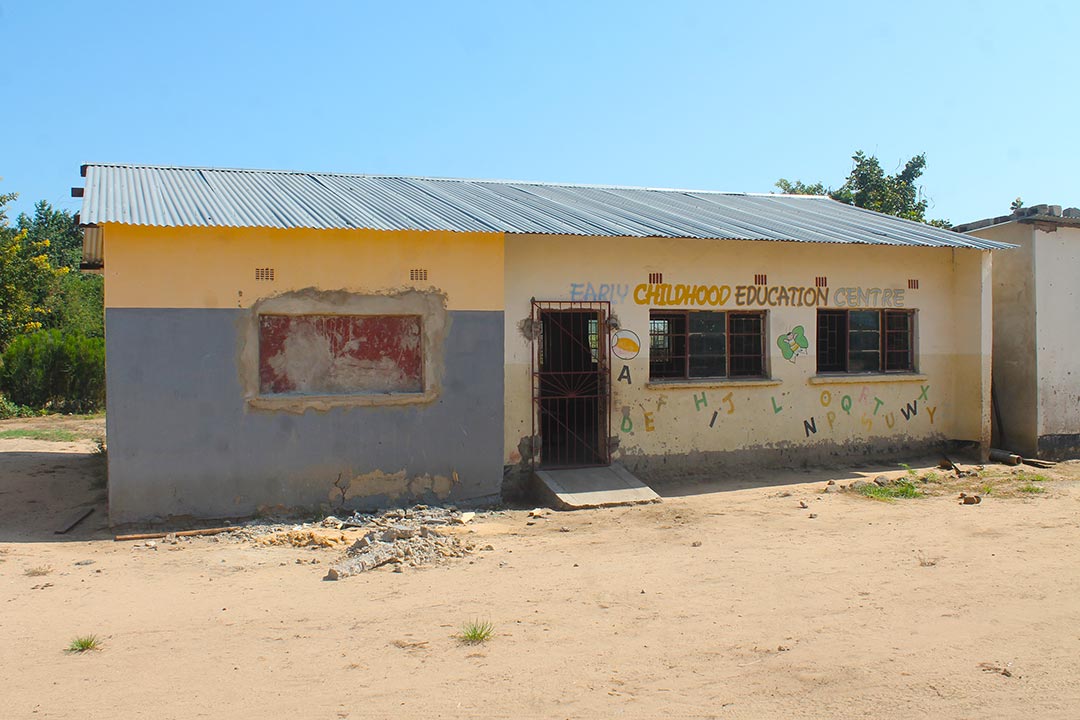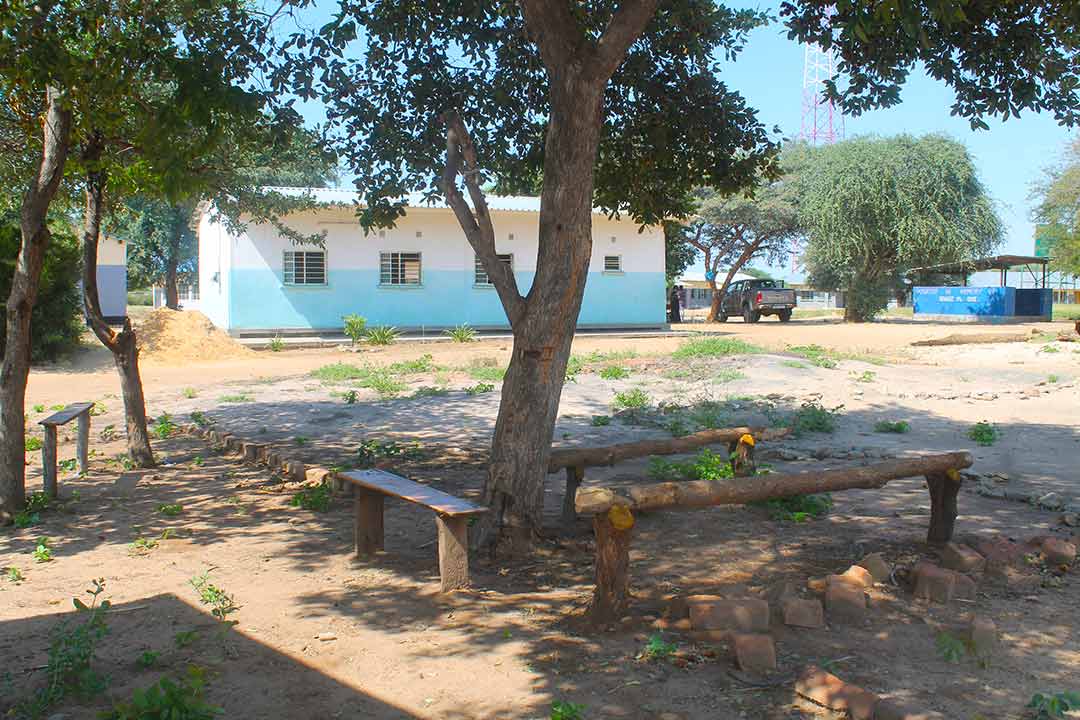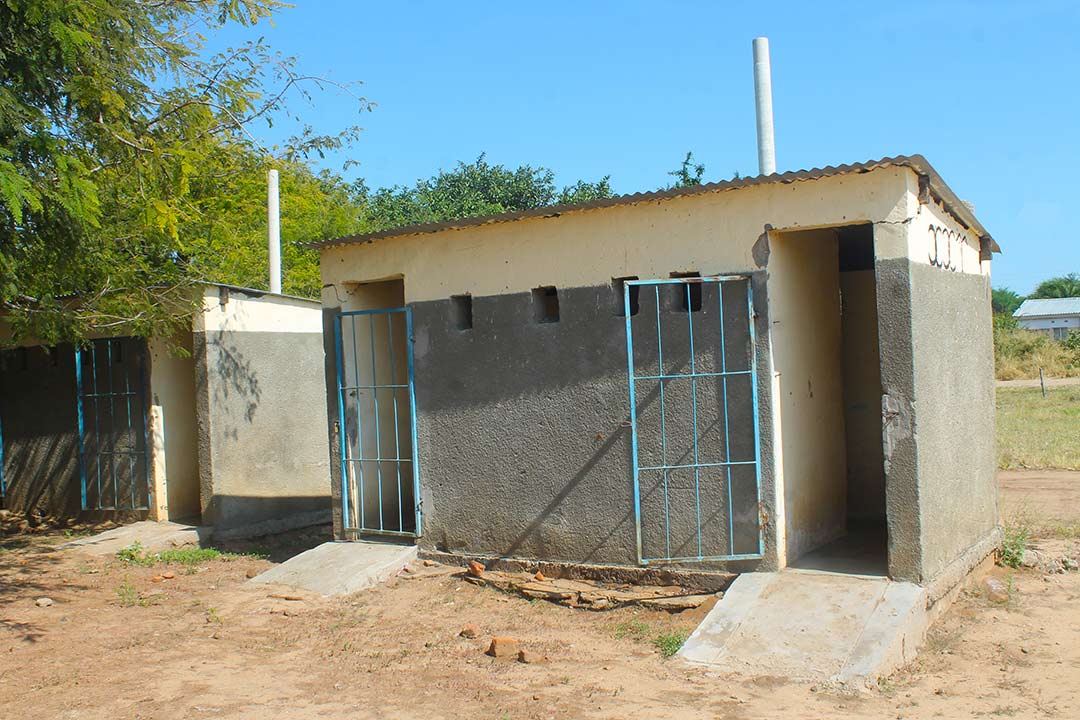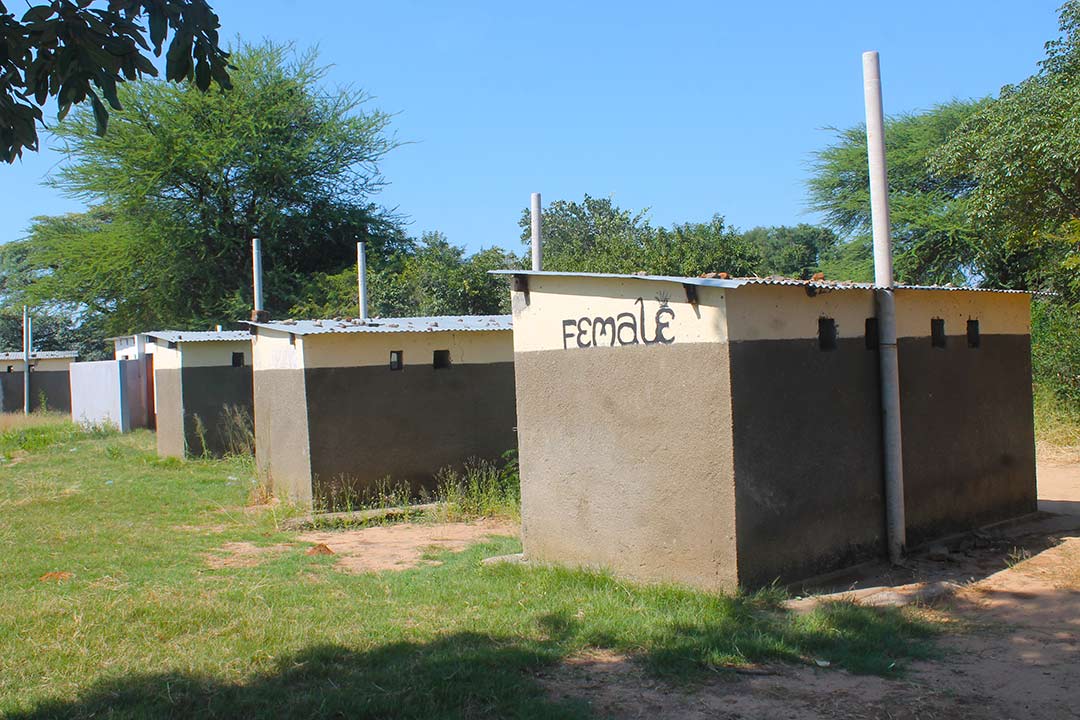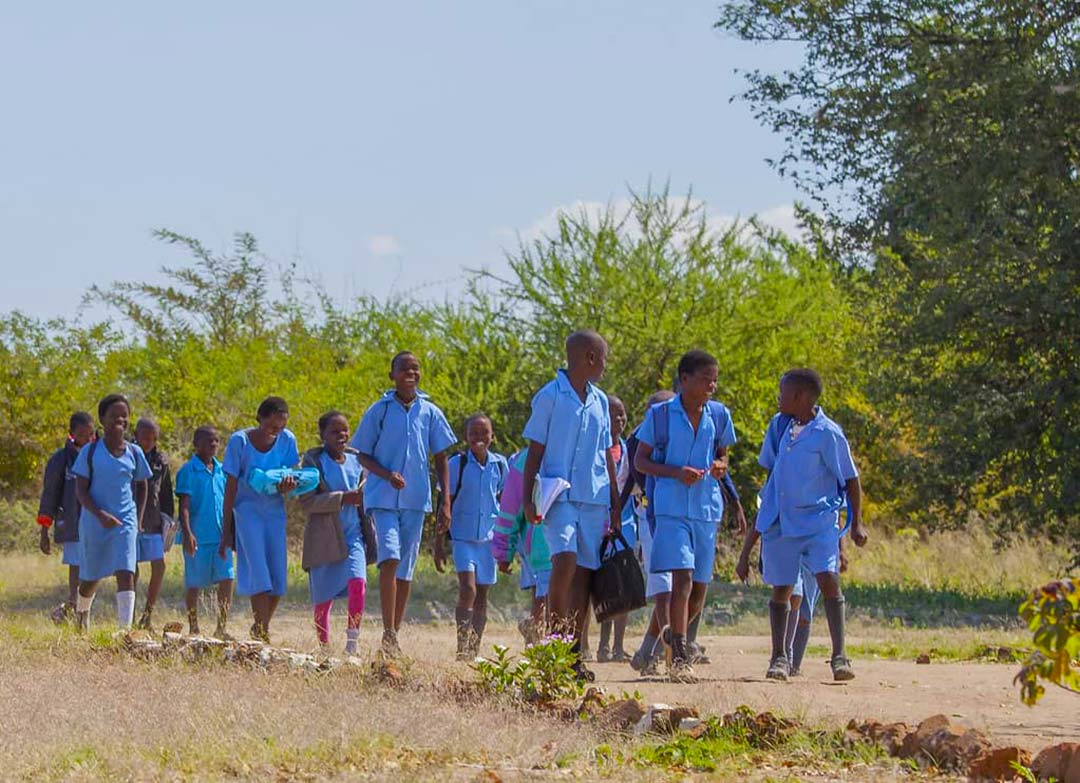1.3 Snapshot of Zambian settings Copy
Riverview Primary and Secondary Inclusive School
You can listen to the content of the page by using the audio controls.
Riverview Primary and Secondary Inclusive School is an inclusive school located in Kazungula District, one kilometre east of the Zambezi River, at the Zambia-Botswana border.
The following photos introduce you to the area around the school:
The school opened in 1998 as a community school and was built mainly from mud and poles. Later, the school community managed to build a stronger, more permanent infrastructure and enrolled more learners.
The school has classes running from early childhood education (ECE) through Primary to Grade 12 Secondary.
Enrolment statistics
The school has 1,336 learners of whom 597 are boys and 739 are girls. The school has enrolled 130 learners with disabilities – 77 girls and 53 boys.
The school has managed to re-integrate 11 children – 4 boys and 7 girls. Among these is 1 boy with visual impairment.
The school has 36 teachers and all of these have been trained in inclusive education (15 females and 21 males)
The parents-teachers association (PTA) is made of 1 male and 3 females.
| Year | Boys | Girls | Total |
| 2015 | 501 | 699 | 1,200 |
| 2018 | 610 | 725 | 1,335 |
| 2019 | 619 | 738 | 1,357 |
| 2020 | 597 | 739 | 1,336 |
| Year | Boys | Girls | Total |
| 2015 | 8 | 12 | 20 |
| 2016 | 10 | 14 | 24 |
| 2017 | 13 | 20 | 33 |
| 2018 | 17 | 26 | 57 |
| 2019 | 22 | 28 | 50 |
| 2020 | 53 | 77 | 130 |
Riverview’s involvement in inclusive education
In 2015, the school was picked to pilot inclusive education under NAD-Zambia’s inclusive education programme. Since the inception of the programme, all the teachers, including student teachers who were present during the time of the training, have been trained. The school has fully adopted the inclusive education programme and teachers, learners and the community appreciate the awareness brought by NAD-Zambia’s Community-based Rehabilitation (CBR)/Community-based Inclusive Development (CBID) programme.
The following photos show you what the school looks like:
Achievements
There have been many achievements; here are a few:
- The head teacher is a trained inclusive education Principal Trainer.
- Teachers, learners and the community have been sensitised on inclusive education.
- All teachers have been trained how to include learners with disabilities.
- Assessment and placement (into the school) of out-of-school learners with disabilities have been conducted in collaboration with NAD-Zambia’s CBR officers and the District Education Board (DEB) Education Standards Officer (ESO)-Special.
- The school takes care of over 50 vulnerable learners. They do not pay school fees and some of them are accommodated for free at the school because they have to walk a long distance each day to school and back home again.
- Teachers make home visits and provide home-based care and education for learners with difficulties.
- Teachers make follow-up visits to learners who are absent or who have dropped out.
- The District Resource Centre (DRC) is located within Riverview school.
- The school conducts physiotherapy in the school and in the community with help from the district medical health personnel.
- The school environment has been modified to accommodate all learners. Ramps and inclusive toilets have been built, and there are several ‘talking walls’ (walls with learning and teaching aids stuck or painted on them, that learners can use in their own time).
- There is an active and reliable school Inclusive Education Coordinator (IECo) – Mr. Kelvin Monze.
- The School Inclusion Team (SIT) was formed and ensures that the school programmes are running smoothly. The SIT is made up of teachers, learners, a SEN teacher, parents, a representative from the District health office, etc. The structure of the SIT is not permanent as members from the community are appointed depending on the current need. For example, if the need is medical rehabilitation then health personnel will be present during SIT meetings.
- The local Community Welfare Assistant Committee (CWAC) helps to ensure the smooth running of inclusive education in the school and in the community
- There is collaboration between the SIT, the school IECo and CWAC members to make sure that no learner is left behind regardless of their ability, disability, race, colour, culture and age.
Continuing challenges and some solutions
- Over-enrolment: Following the introduction of inclusive education, many more learners are enrolling, including learners with disabilities. The school has risen to the challenge, building more classrooms in collaboration with the SIT, PTA and the community (who helped with labour).
- Riverview has enrolled the highest number of learners with SEN among the six pilot schools: The challenge has been solved because all teachers are now trained on how to include all learners regardless of their ability or disability, so even if there are more learners with SEN, any teacher in the school has been trained in inclusive education methodology, and SEN is not only the responsibility of a SEN teacher.
- Environmental barriers: The school has built ramps and modified the toilets to accommodate all learners, even those using wheelchairs.
- High numbers of drop-outs: This is due to several factors including and especially the distance some learners live from the school. The school initially built a mud boarding house and, since 2019, has newly built modern building to accommodate those learners who come from far away. Vulnerable learners stay for free.
- Negative attitude towards learners with disabilities by fellow learners, teachers and the community: The school has conducted massive awareness-raising events about the causes of disabilities, managing additional needs, and inclusion, in collaboration with the SIT, school IECo, CWAC members, parent support groups and NAD-Zambia’s CBR/CBID workers.
Watch the next video. The deputy head teacher of Riverview explains the school’s supportive attitude, approach and policy towards including learners with disabilities.
You can read a transcript of what she says.


